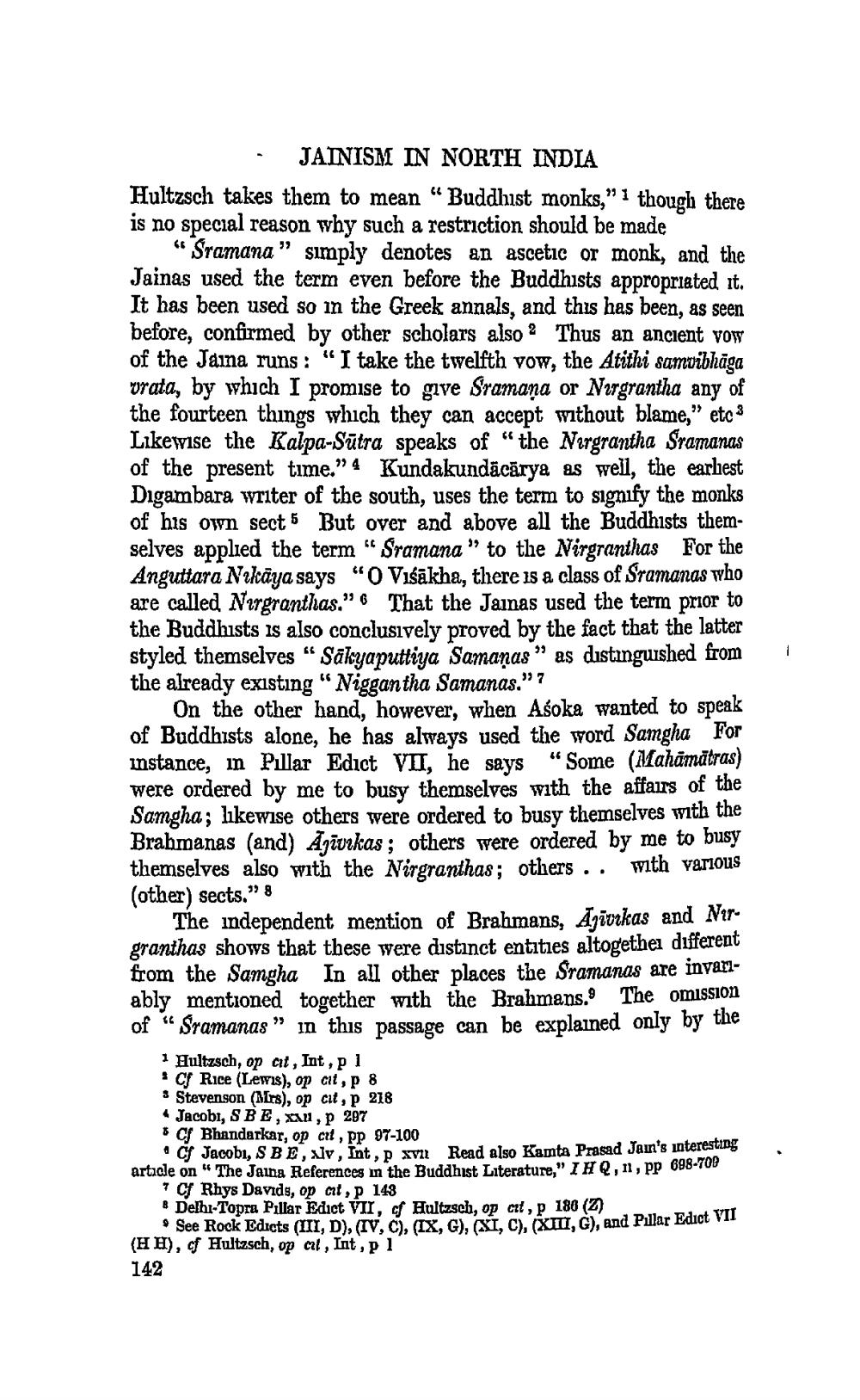________________ - JAINISM IN NORTH INDIA Hultzsch takes them to mean "Buddhist monks," 1 though there is no special reason why such a restriction should be made "Sramana" simply denotes an ascetic or monk, and the Jainas used the term even before the Buddhists appropriated it. It has been used so in the Greek annals, and this has been, as seen before, confirmed by other scholars also 2 Thus an ancient vow of the Jaina runs: "I take the twelfth vow, the Atithi samvibhaga vrata, by which I promise to give Sramana or Nargrantha any of the fourteen things which they can accept without blame," etc 3 Likewise the Kalpa-Sutra speaks of "the Nargrantha Sramanas of the present time." 4 Kundakundacarya es weil, the earliest Digambara writer of the south, uses the term to signify the monks of his own sect 5 But over and above all the Buddhists themselves applied the term "Sramana" to the Nirgranthas For the Anguttara Nrkaya says "O Visakha, there is a class of Sramanas who are called Norgranthas." That the Jainas used the term prior to the Buddhists is also conclusively proved by the fact that the latter styled themselves "Sakyaputtiya Samanas" as distinguished from the already existing "Niggantha Samanas." ? On the other hand, however, when Asoka wanted to speak of Buddhists alone, he has always used the word Samgha For instance, in Pillar Edict VII, he says "Some (Mahamatras) were ordered by me to busy themselves with the affairs of the Samgha; likewise others were ordered to busy themselves with the Brahmanas (and) Agiurkas; others were ordered by me to busy themselves also with the Nirgranthas; others.. with various (other) Sects." 8 The independent mention of Brahmans, Azivokas and Nergranthas shows that these were distinct entities altogether different from the Samgha In all other places the Sramanas are invasably mentioned together with the Brahmans. The omission of "Sramanas" in this passage can be explained only by the 1 Hultzsch, op al, Int.pl Cf Rice (Lewis), op cit, p 8 * Stevenson (Mrs), op cit, p 278 Jacob, SBE, XX1, p 297 * C Bhandarkar, op cit, pp 97-100 + C Jacobi, SBE. xlv. Int.D Xvi! Read also Kamta Prasad Jain's interest article on "The Jaing References in the Buddhist Literature," I HQ,11, PP 698-701 Cf Rhys Davids, op at, P 148 * Delhi-Topra Pillar Edict VII, Haltzsch, op cit, p 180 (2) See Rook Edicts (01, D), (IV, C). (IX. G), (XI, C), (XTITI, G), and Pillar Edict VII (HH), of Hultzsch, op cal, Int, pl 142




